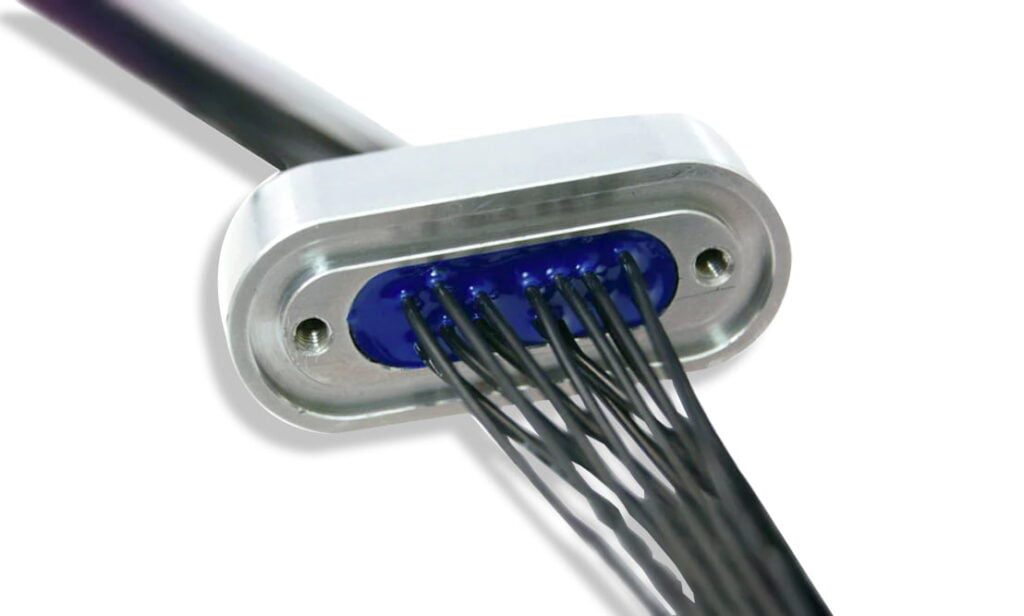Clarifying Misconceptions: Comprehending Vacuum-based Power Feedthroughs
In the world of vacuum technology, feedthroughs play a critical role in ensuring the seamless operation of various systems. These key components allow electrical signals to pass into and out of a vacuum environment while maintaining the stability of the vacuum seal. As methods advance and the requirement for accuracy and reliability in vacuum applications increases, understanding these devices becomes increasingly essential.

Despite their value, there are many misconceptions surrounding these feedthroughs. Some may see them as just connectors, while others might overlook their intricacy and the design that goes into their design. This article aims to explain what vacuum feedthroughs are, how they work, and why they are essential in a range of applications from scientific research to industrial processes. By illuminating these components, we hope to provide a better picture of their functionality and role in modern technology.
What do we mean by Vacuum Electrical Feedthroughs?
These feedthroughs function as specialized elements designed to enable the conveyance of electrical power and current across a vacuum barrier interface. These devices have become crucial in multiple applications, including particle accelerators, wherein preserving the vacuum atmosphere is vital for ensuring operational performance and efficiency. By allowing electric connections while avoiding gas leaks, these feedthroughs ensure that delicate instruments can work as intended in high vacuum conditions.
These feedthroughs generally consist of conductors that are protected from the vacuum by different methods. Commonly, they utilize ceramic insulators or glass seals to preserve the integrity of the vacuum seal while creating a pathway for current flow. The construction and choice of materials are crucial, as they must tolerate not only the vacuum conditions but also any thermal or stress factors that may happen during function.
To summarize, vacuum electrical feedthroughs play an important role in high-tech environments by allowing for electrical connections without sacrificing the vacuum’s integrity. Their distinct design allows for versatile applications, making them essential in domains where accurate electrical functionality in high vacuum environments are required.
Widespread Fallacies About Vacuum Feedthrough Devices
One prevalent misconception about vacuum feedthroughs is that they can solely be used in top-tier applications. While it is correct that they are essential in cutting-edge scientific research and industrial environments, vacuum feedthroughs are adaptable components that can be used in a broad spectrum of vacuum systems. These systems can include everything from simple laboratory setups to complex manufacturing processes, proving that their applications go beyond just elite technology.
Another myth is that vacuum feedthroughs are unreasonably expensive and require intricate designs for simplistic needs. In reality, there is a varied market of vacuum feedthrough options that cater to various budgets and applications. Off-the-shelf models exist that are affordable and capable of fulfilling the demands of many projects, making them within reach for users without large financial resources.
Some people think that the installation of vacuum feedthroughs is too complex and requires advanced skills beyond the average user. However, many designs prioritize ease of installation and are engineered to integrate seamlessly into existing systems. With uniform fittings and clear guidelines, users can usually install these components without extensive training, refuting the belief that they are reserved for specialists only.
Applications and Advantages
Vacuum electrical feedthroughs play a vital role in diverse industries, including chip fabrication, vacuum systems, and experimental science. In chip manufacturing, these feedthroughs enable the transfer of electronic signals and power while preserving an highly clean vacuum environment. This is essential for operations like ion insertion and chemical vapor deposition, where even the slightest pollution can jeopardize product integrity. Their consistent operation secures that delicate instruments performs at peak efficiency.
In the domain of scientific research, vacuum feedthroughs are fundamental to research setups involving accelerators of particles and mass spectrometers. They allow researchers to link external equipment to systems functioning in elevated or very high vacuum settings. This connectivity is key for obtaining exact data and information gathering, thus propelling our understanding of basic physical laws. The use of these feedthroughs enhances the reliability and efficiency of sophisticated research systems.
Moreover, the gains of vacuum electrical feedthroughs reach to increased operational efficiency and durability. By allowing uninterrupted electrical interfaces while separating the internal system from foreign interference, these components minimize wear and tear on machinery. Their sturdy design minimizes maintenance requirements and idle time, making them a worthwhile investment for industries that rely on prolonged vacuum environments. In conclusion, vacuum feedthroughs are crucial for ensuring exactness and functionality in cutting-edge tech implementations.